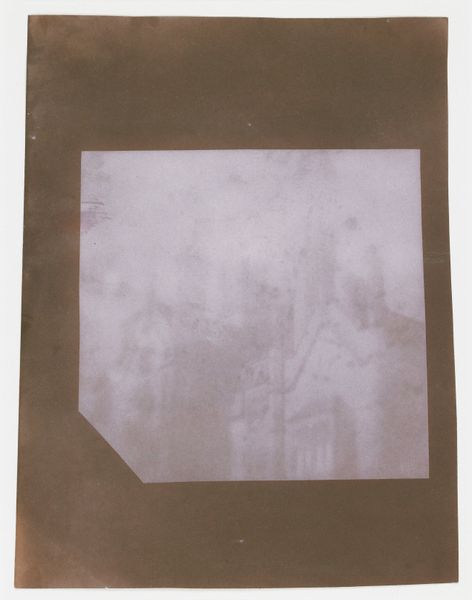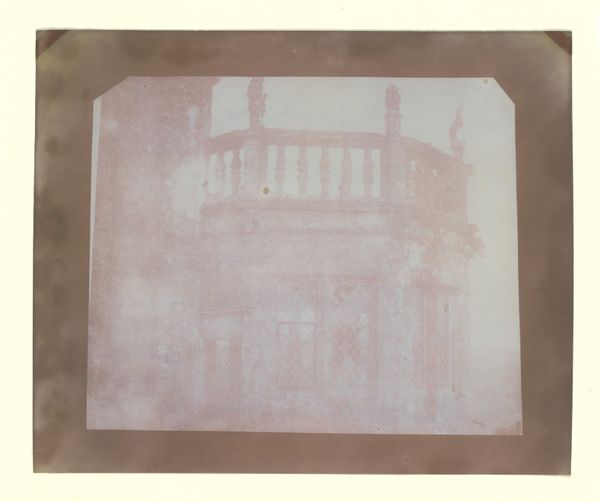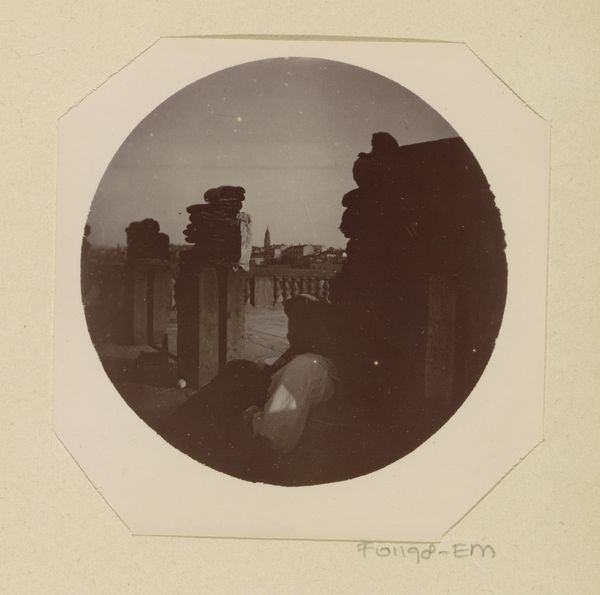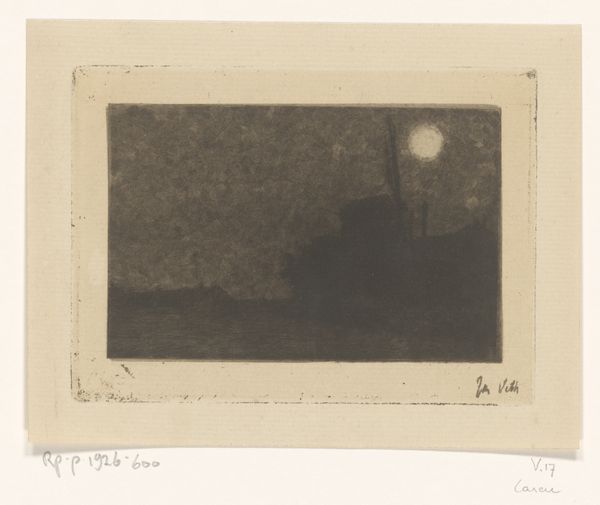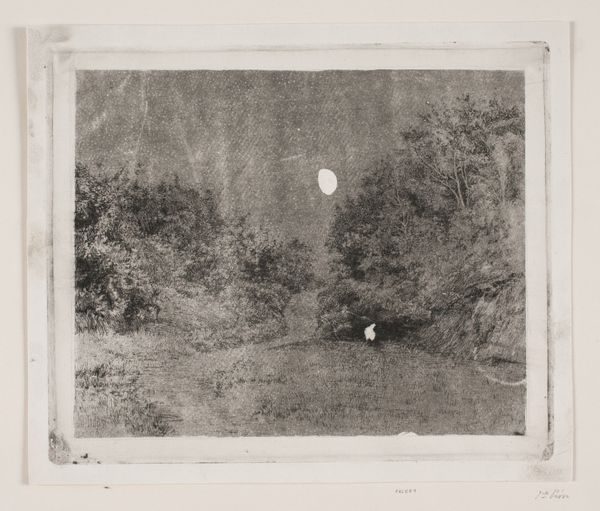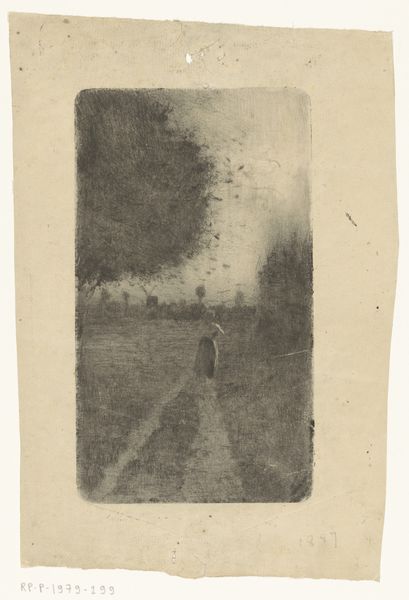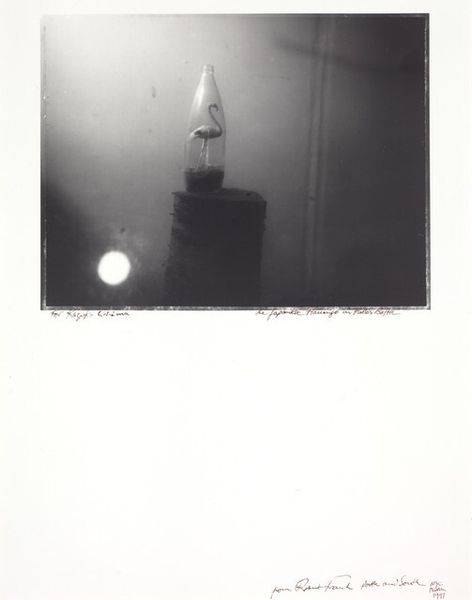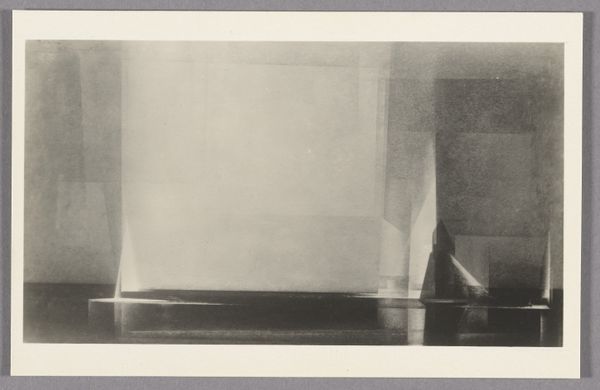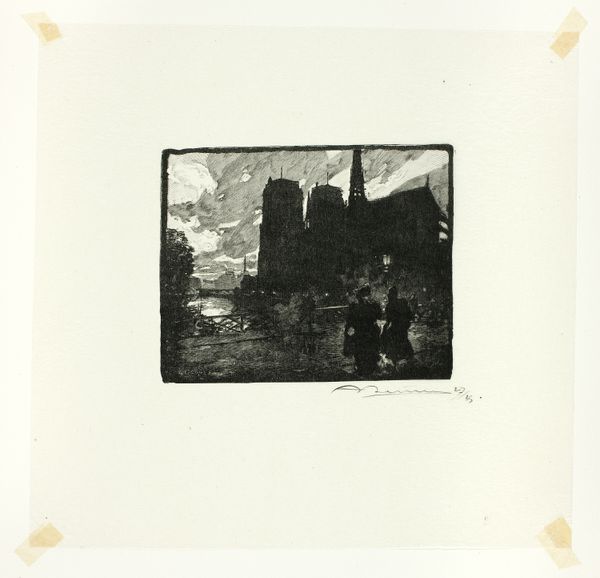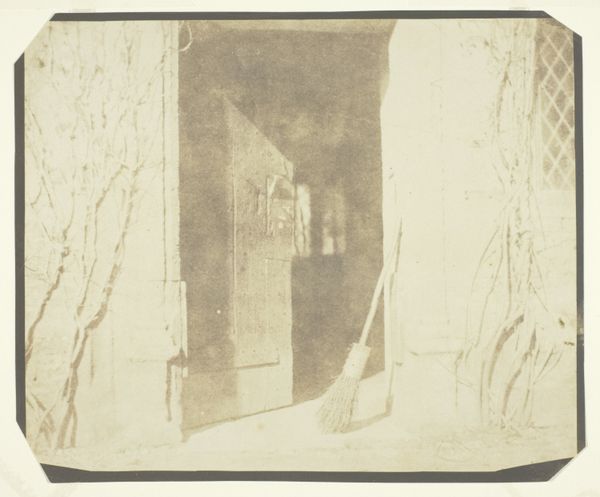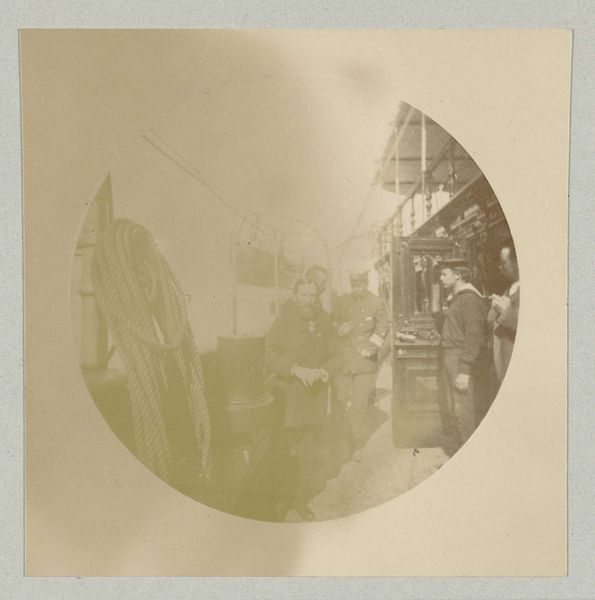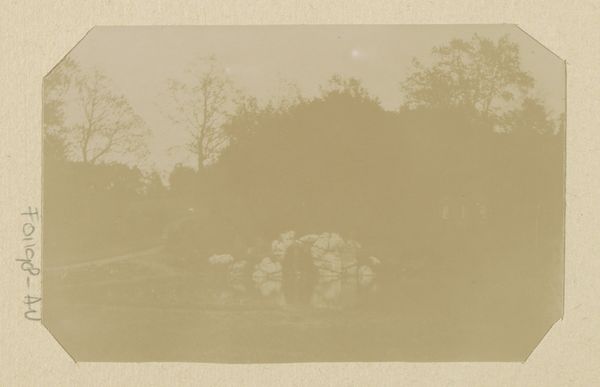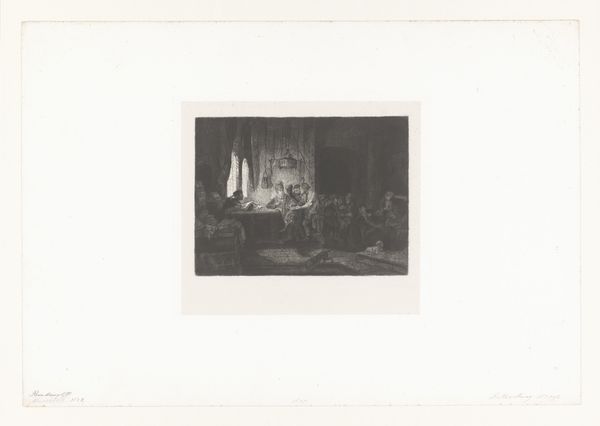![[Windmills, Montmartre] by Hippolyte Bayard](/_next/image?url=https%3A%2F%2Fd2w8kbdekdi1gv.cloudfront.net%2FeyJidWNrZXQiOiAiYXJ0ZXJhLWltYWdlcy1idWNrZXQiLCAia2V5IjogImFydHdvcmtzLzRlNDk2NDg5LTY0YzAtNGZlMi1hYmYwLTMxY2NjZjhiMmY5Zi80ZTQ5NjQ4OS02NGMwLTRmZTItYWJmMC0zMWNjY2Y4YjJmOWZfZnVsbC5qcGciLCAiZWRpdHMiOiB7InJlc2l6ZSI6IHsid2lkdGgiOiAxOTIwLCAiaGVpZ2h0IjogMTkyMCwgImZpdCI6ICJpbnNpZGUifX19&w=3840&q=75)
daguerreotype, photography
#
landscape
#
daguerreotype
#
photography
#
romanticism
Dimensions: Image: 9.3 × 10.6 cm (3 11/16 × 4 3/16 in.), irregularly trimmed
Copyright: Public Domain
Editor: Here we have Hippolyte Bayard's "[Windmills, Montmartre]", a daguerreotype from 1839 residing at the Metropolitan Museum of Art. It’s, well, incredibly faded. I almost feel like I'm looking at a memory struggling to hold on. What jumps out at you when you see it? Curator: That fragility, that ghostly quality… it whispers of time, doesn't it? Think about what it meant to capture an image like this in 1839! It’s not just a landscape; it’s a portal. A portal to a specific moment in Montmartre, a time capsule of light and atmosphere. I wonder, do you feel a sense of… melancholy perhaps? The past feels so very present, yet ultimately untouchable, here. Editor: Definitely melancholic. I see these smudges and imperfections and immediately think about the failed promises of technology – the wear and tear makes it beautiful and profound. So how do you reconcile the ‘romantic’ tag? Is that accurate, do you think? Curator: Ah, “romanticism!” More than fluffy love stories! Here, it is about a longing for an idealized past, a connection to nature and a fascination with emotion. Those windmills, set against the Parisian skyline…it’s pure atmosphere, softened and imbued with feeling, which only comes across given the faded aesthetic. This daguerreotype isn't just documenting Montmartre; it's poetically rendering it, using light as a brushstroke. How differently do we feel looking at photography today, vs 1839? Editor: I guess for us, desensitized by digital photos, it’s easy to forget the awe surrounding early photography. So the "romance" here lies in its groundbreaking nature and melancholic beauty, not necessarily in the subject itself? Curator: Exactly. It’s a feeling. And that, my dear, is the romantic heart beating beneath the silver surface. To remember these roots makes for more insightful appreciating.
Comments
No comments
Be the first to comment and join the conversation on the ultimate creative platform.
